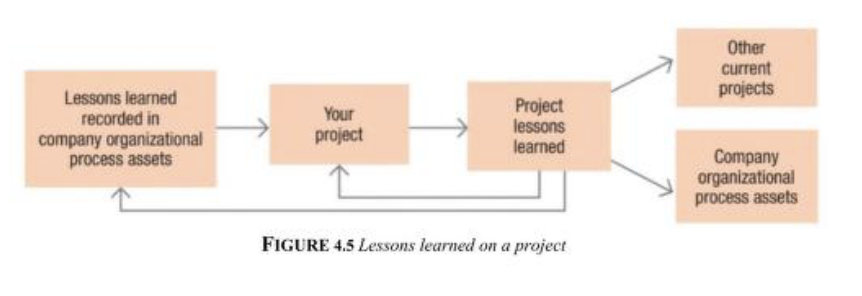🧠 Manage Project Knowledge
Think of the tremendous amount of knowledge required to properly plan and execute a project. Project managers can benefit from the knowledge base the organization has accumulated over time, particularly from the experiences and discoveries of others on past, similar projects.
The Manage Project Knowledge process requires each project to actively contribute to that knowledge base. This includes sharing new processes, successes, etc., internally within the project, as well as making that knowledge accessible throughout the entire organization.
📚 Information and Knowledge Management
Successful and consistent knowledge and information sharing contributes to a productive work environment and increases the ability of project teams to achieve project and organizational objectives. Successful knowledge management requires an organizational culture of trust in which the project manager and stakeholders exchange knowledge without fear of judgment.
The project manager needs to foster an environment that will support collaboration and knowledge sharing. For example, discussion forums and other interactive online tools may help to facilitate this environment.
New knowledge that is important to share often involves experiences that did not work out as planned. The project manager can learn from each unidentified stakeholder, each missed risk trigger, and each unrealistic schedule component. Sharing such information — and possibly saving another project or person from a similar issue — is invaluable. This philosophy has evolved in traditional project management and is built into agile project management practices.
📖 Types of Knowledge
- Explicit knowledge: Fact-based, easily communicated through words and symbols. Examples include lessons learned, processes, procedures, and other information repositories. These are generated and shared as the project progresses and consolidated at project closure. Explicit knowledge may need explanation or context to provide value.
- Tacit knowledge: Provides context or explanation to explicit knowledge. It is not easily documented and includes emotions, experience, and ability — which are hard to communicate in words but can be learned through job shadowing or apprenticeship.
Example: You can learn a lot by reading documentation and training from an experienced employee (explicit knowledge). However, you will pick up shortcuts and tricks by watching that person work (tacit knowledge).
On the exam, you may see questions about establishing an environment that encourages sharing both tacit and explicit knowledge. Some scenarios assume knowledge sharing is part of project execution.
⚖️ Legal and Regulatory Constraints
Legal and regulatory requirements, such as nondisclosure agreements (NDAs), may limit or impact the gathering and sharing of certain information.
Example: On a banking software project, team members have access to personal customer data that must not be shared outside the project work.
🔄 Managing Project Knowledge
Inputs to the Manage Project Knowledge process include:
- Project artifacts such as the project management plan
- Project documents like the lessons learned register and team assignments
- Deliverables
Techniques for learning and sharing knowledge include workshops, training, observation, and simply asking team members to explain tasks (“Walk me through how you would do this”).
Osmotic communication is informal knowledge sharing facilitated by team members’ physical proximity. For example, colleagues working side-by-side will naturally overhear conversations and share insights without formal efforts.
Example: You will naturally learn more about a colleague who works right next to you than one down the hall, simply by overhearing daily conversations.
📝 Lessons Learned
Lessons learned are mentioned throughout project management as both an input and output of many processes. They help improve the current project and contribute to organizational learning for future projects.
Lessons learned describe:
- What was done right
- What was done wrong
- What would be done differently next time
Accurate and thorough documentation is a professional responsibility. The lessons learned register is a key output of managing project knowledge and should include:
- An overview of each situation
- Corrective actions taken
- Impacts of those actions
- Resulting updates to project artifacts
Lessons learned can be categorized into:
Technical Lessons Learned
What went right or wrong in performing the work? Useful future insights include acceptable metrics, process improvements, and effective acceptance criteria.
Project Management Lessons Learned
Insights on work breakdown structures, risk planning, transition to business teams, procurement processes, and working with vendors.
Management Lessons Learned
Lessons from communications, stakeholder engagement, leadership, and team management.
